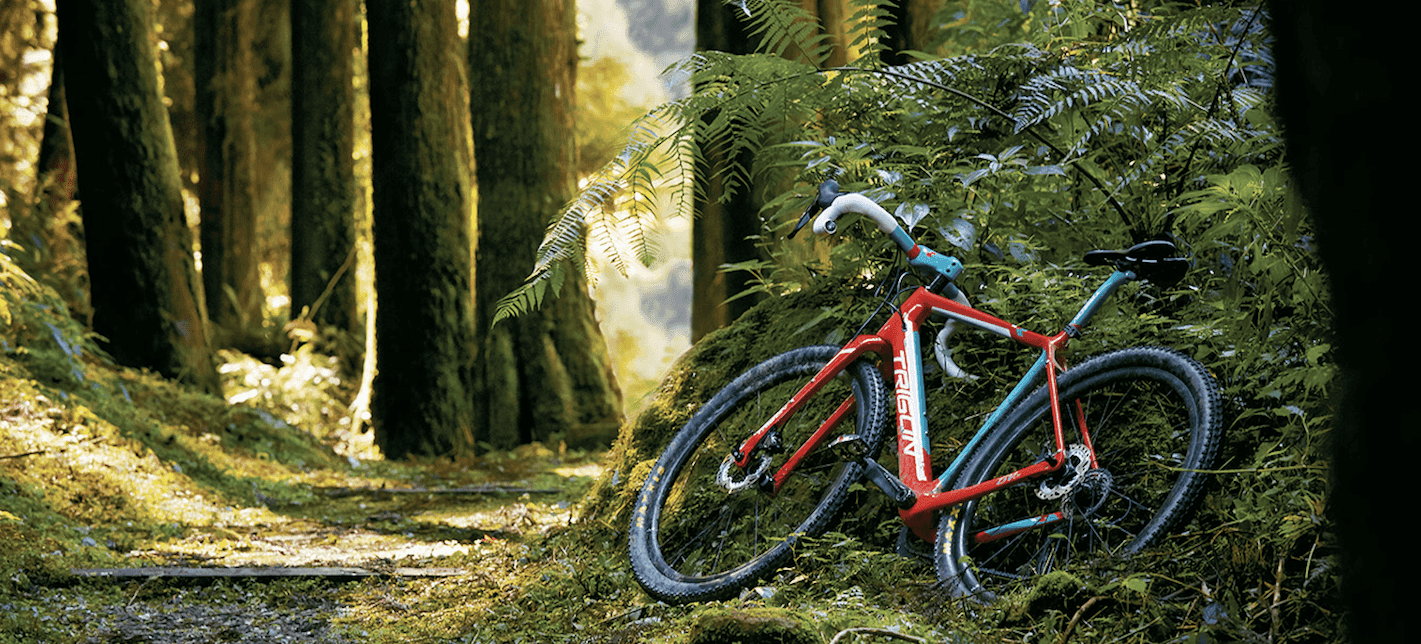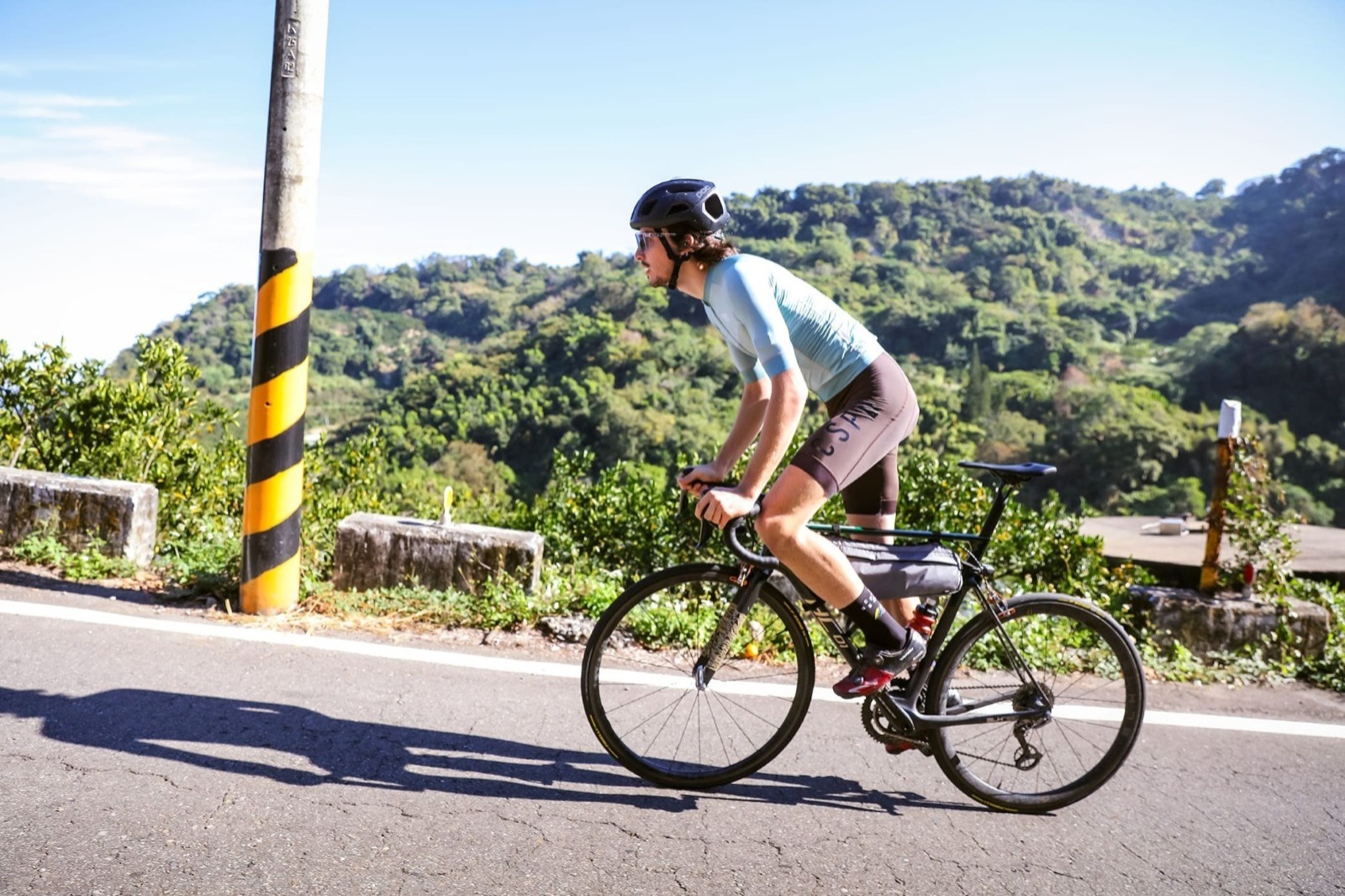What Is a Gravel Bike? The Difference between Gravel Bikes and R
Confused by the difference between gravel bikes and road/cyclocr

What is a gravel bike?
Gravel bikes are drop-bar bikes that let you ride over many different surfaces. Unlike road bikes which are, as the name implies, solely for use on the road, you can take gravel bikes off-road and still enjoy good handling and performance.
Gravel bikes tend to have a bigger range of gears, meaning that just like mountain bikes, they offer big gears allowing for a higher cadence at low speeds. That will be greatly appreciated when climbing steep terrain and allow for more stability when riding over bumpy and uneven road surfaces. Gravel bikes also offer the best of both worlds in terms of tires size, a wider rubber than traditional road bikes, offering more comfort and stability as well as grip in most situations, and a narrower tire than mountain bikes which allows them to have reduced weight and rolling resistance compared to the bigger rubber found on MTBs.
However, gravel bikes are not as homogeneous as, say, road bikes. The category is still relatively new and manufacturers are trying to figure out the best configurations. Consequently, there is still a lot of experimentation going on, and a bike from one vendor can look very different from one from another. A good example of this phenomenon is the subcategories that can be observed in the Gravel market with a growing number of manufactures offering suspension models for both front and rear shock dampening. (Fork and rear triangle.)
In many cases, the gravel bike model you choose depends on the style of riding you want to do. Brands will often advertise their bicycles as being suitable for different types of terrain and then spec their products accordingly. Some bikes are suitable for forest trails, while others are better for dry, sandy surfaces, or even bare rocks.
The features that define typical gravel bikes
Gravel bikes, as a group, have specific features that set them apart from road or cyclocross bikes. We’ve already mentioned some of them briefly, but we will go into more detail here.Disc brakes
Thanks to falling prices and advances in bicycle disc brake hydraulics, disc brakes are commonplace across all but the most budget-orientated gravel bike models.
Disc brakes offer more reliable performance than traditional V-brakes in wet weather and also prevent damage to the rim, allowing manufacturers to develop lighter rims. The net result is consistent stopping power, even in muddy off-road conditions.
Gearing
Gearing is also different. Gravel bikes tend to come with similar gearing ratios to mountain bikes, allowing riders to tackle steep ascents. At a minimum, gravel bikes should have a 50/34t road chainset, and a high-ratio cassette. A standard road gearing chainset is inappropriate. More user-friendly models offer so-called “super-compact” chainsets, offering chainring sizes of 48/31t at the front, paired with 11-32t cassettes at the rear.
Whether you require tighter gearing depends heavily on how you intend to use your gravel bike. If the plan is to take it off-road, then tighter gearing is a necessity. If not, then a purpose-built road bike might be a better choice.
Wheels
New gravel bike wheels come in two sizes: 650b and 700c.
650b wheels are slightly smaller in diameter but can accommodate wider tires, making them the better choice for rough, heavy terrain. 700c wheels come as standard on most models and provide the sweet spot between on-road and off-road performance needs.
Usually, frames allow you to chop and change between the two. For example, TRIGON’s GV01 is compatible with both 700c road tires or 650b/2.1-inch MTB tires.
Tires
Gravel bike tires are approximately 40mm in diameter, ranging between 32c and 52c and feature tread patterns designed to provide grip in various off-road conditions. The specific tread you choose will depend heavily on the season and the surface material.
Riders usually pump gravel bike tires to 40 PSI or less. The slightly lower air pressure allows the tires to deform as they ride over trail surfaces, providing more grip, particularly in tight corners and steep uphill sections.
Most modern gravel bikes come with tubeless options. The benefit of a tubeless setup is that it enables you to run your tires at lower pressure without risking a pinch flat while providing more grip and comfort. If you are riding through thorny areas, then having sealant in your tires prevents you from having to replace the tire outright, every time you get a flat.
Geometry
Gravel bikes have a certain frame geometry that makes them unique. They look similar to road bikes at first sight, but there are critical differences.
TRIGON, for example, designed the GV01 to provide a more upright riding position thanks to a shorter top tube and longer head tube. The purpose of this was to give the rider more poise when tackling obstacles on the trail and descending. TRIGON also incorporated shock-absorbing features into the frame itself, allowing the chainstays and fork to bend and flex according to the trail conditions’ demand. Furthermore, the main advantage of carbon over all other bike materials is the wonderful proprieties of this material, which in the hands of an experienced maker, has shock-absorbing capacities depending on the fiber’s layup. At TRIGON, we have extensive experience and have been working exclusively with carbon fiber for decades so we were able to control the layup in such fashion that our frame has comfort and shock absorbing features without the bulk weight and upcharge of suspension alternatives.
In some cases, the geometry of off-road-specific gravel bikes can be very similar to that of mountain bikes. Riders sit upright in the saddle and hardly need to bend forward at all to reach the handlebars. The bottom bracket is high, permitting plenty of ground clearance, and the wheelbase is shorter, allowing for more aggressive handling on the trail. Our GV01 sits in the sweet spot that we believe a Gravel bike should aim for. A geometry aggressive enough to feel at home on the road and relaxed enough to feel stable and confident in harsh and steep off-road terrain.
Stiffness is easily forgotten when aiming for comfort and compliance. The area of the frame that is responsible for stiffness is the bottom bracket shell and the chainstays. Our GV01 has an imposing bottom bracket shell and stiff chainstays ensuring no watt is lost.
Frame material
Gravel bike frames are typically made of either carbon fiber or aluminum. Carbon frames are lighter and engineered to offer riders a certain level of comfort and stiffness while aluminum frames are more affordable and durable, making them a good option for off-road riding where the risk of pebble strike is much higher.
Some manufacturers build aero elements into their frame designs. Features include contoured front fork tubes and slimline downtubes to minimize air resistance. Aerodynamic tube shapes are great if you plan on riding at high speeds however they have their inconveniences that are often overlooked. They are heavier but also offer less comfort and compliance. Due to the nature of Gravel riding and its generally low speeds and bumpy terrain. TRIGON’s GV01 opted for mostly round tube shapes, which are the golden standard for the trifecta of comfort, low weight, and stiffness. However, the fork, with its bladed profile, was engineered with aerodynamics in mind since it’s the first element of the frame contacting the wind and therefore more influential for drag and aerodynamic performance.
There are also steel and titanium frame options. Given titanium’s rarity and the difficulty involved in working with the metal, these tend to be the most expensive while not being any lighter, stiffer, or even more comfortable than carbon in most cases. Steel on the other hand will sometimes be cheaper but much heavier.
Accessory mounts
Lastly, most gravel bikes come with various mounts on the frame for luggage, water bottles, tools, and other paraphernalia you might want to take off-road. Some also come with a bag that you can fit the top tube and areas where you can place a third water bottle for long days in the saddle. The GV01 offers more mounting options than the vast majority of gravel bikes. It is fender and pannier rack compatible, allowing you to carry all your gear while preventing mud splash at the same time. It also features three eyelets on each side of the fork legs to satisfy your wildest mounting needs.
The difference between gravel bikes, road bikes, and cyclocross bikes
Visually speaking, road bikes, gravel bikes, and cyclocross bikes look very similar to each other. Each has that classic road bike look with the high saddle and skinny frame. However, there are actually some quite significant differences, as the previous section explained.
Road bikes vs gravel bikes
Gravel bikes tend to have a less aggressive geometry than road bikes. On a road bike, the rider sits forward in the seat, while gravel bikes put them in a more relaxed upright position.
Gravel bikes also come with fatter tires and plenty of mounts for all your accessories whereas road bikes - especially those designed for pure speed - do not.
Other differences include wider gearing on gravel bikes and more shock absorption technologies built into the frame.
Cyclocross bikes vs gravel bikes
Gravel and cyclocross bikes are far more similar to each other than gravel and road bikes. In fact, the difference can be quite subtle.
As you might expect, manufacturers design cyclocross bikes for cyclocross events. For this reason, these bikes tend to have shorter, more aggressive wheelbases for tight turns and switchbacks. They also elevate the bottom bracket, providing additional ground clearance for avoiding trail objects. Combined, these two features give cyclocross bikes a twitchier geometry which helps riders in racing situations.
Cyclocross bikes must also abide by UCI regulations, while gravel bikes do not. Tires, for instance, cannot be more than 33mm in diameter on cyclocross bikes.
Bottom line
So what is it actually like to ride a gravel bike? Well, it is certainly quite different from a road bike. Riders can expect better control off-road, thanks to the upright riding position and fatter tires, as well as more stable handling, particularly during off road descents. But gravel bikes are not mountain bikes, so if you take it on the road, it will still feel light and fast, making it a great option for commuters.
All in all, gravel bikes are great to ride in any situation, perhaps making them the only bike you need in your entire quiver.






